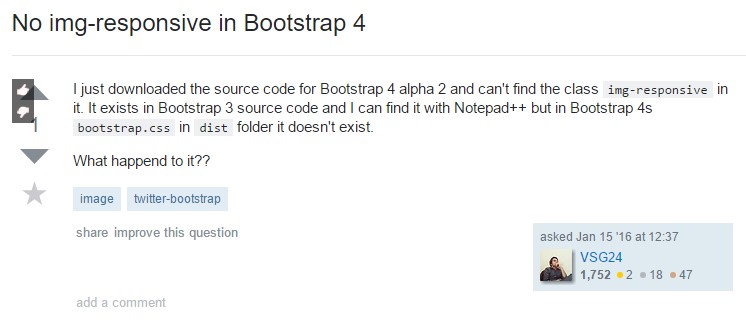Bootstrap Image Example
Introduction
Pick your illustrations into responsive attitude ( so that they never transform into larger in size than their parent components) and add lightweight designs to all of them-- all via classes.
No matter just how strong is the message feature within our webpages certainly we want several as effective pictures to back it up getting the content actually glow. And due to the fact that we are truly inside of the mobile phones age we also need those pictures operating appropriately so as to showcase most ideal at any sort of display screen size because no one enjoys pinching and panning around to become capable to really find what a Bootstrap Image Resize stands up to show.
The gentlemans on the side of the Bootstrap framework are effectively informed of that and coming from its foundation some of the most prominent responsive framework has been providing very easy and effective instruments for ideal look as well as responsive activity of our picture elements. Here is precisely how it work out in current version. ( click here)
Differences and changes
In contrast to its forerunner Bootstrap 3 the fourth edition uses the class
.img-fluid.img-responsive.img-fluid<div class="img"><img></div>You can additionally utilize the predefined designing classes establishing a specific pic oval utilizing the
.img-cicrle.img-thumbnail.img-roundedResponsive images
Illustrations in Bootstrap are actually made responsive utilizing
.img-fluidmax-width: 100%;height: auto;<div class="img"><img src="..." class="img-fluid" alt="Responsive image"></div>SVG images and IE 9-10
Within Internet Explorer 9-10, SVG pics using
.img-fluidwidth: 100% \ 9Image thumbnails
Beyond our border-radius utilities , you may utilize
.img-thumbnail
<div class="img"><img src="..." alt="..." class="img-thumbnail"></div>Aligning Bootstrap Image Gallery
The moment it goes to arrangement you are able to use a handful of quite efficient tools such as the responsive float assistants, message placement utilities and the
.m-x. autoThe responsive float instruments could be employed to insert an responsive pic floating right or left and also transform this placement baseding upon the proportions of the present viewport.
This classes have involved a couple of improvements-- from
.pull-left.pull-right.pull- ~ screen size ~ - left.pull- ~ screen size ~ - right.float-left.float-right.float-xs-left.float-xs-right-xs-.float- ~ screen sizes md and up ~ - lext/ rightCentralizing the images in Bootstrap 3 used to take place utilizing the
.center-block.m-x. auto.d-blockAdjust pictures using the helper float classes or message alignment classes.
block.mx-auto
<div class="img"><img src="..." class="rounded float-left" alt="..."></div>
<div class="img"><img src="..." class="rounded float-right" alt="..."></div>
<div class="img"><img src="..." class="rounded mx-auto d-block" alt="..."></div>
<div class="text-center">
<div class="img"><img src="..." class="rounded" alt="..."></div>
</div>Also the content arrangement utilities could be employed applying the
.text- ~ screen size ~-left.text- ~ screen size ~ -right.text- ~ screen size ~ - center<div class="img"><img></div>-xs-.text-centerConclusions
Basically that is simply the solution you can put in just a handful of easy classes in order to get from regular images a responsive ones along with the most recent build of one of the most popular framework for producing mobile friendly website page. Right now all that is simply left for you is discovering the right ones.
Inspect a couple of on-line video information about Bootstrap Images:
Connected topics:
Bootstrap images main records

W3schools:Bootstrap image training

Bootstrap Image issue - no responsive.

